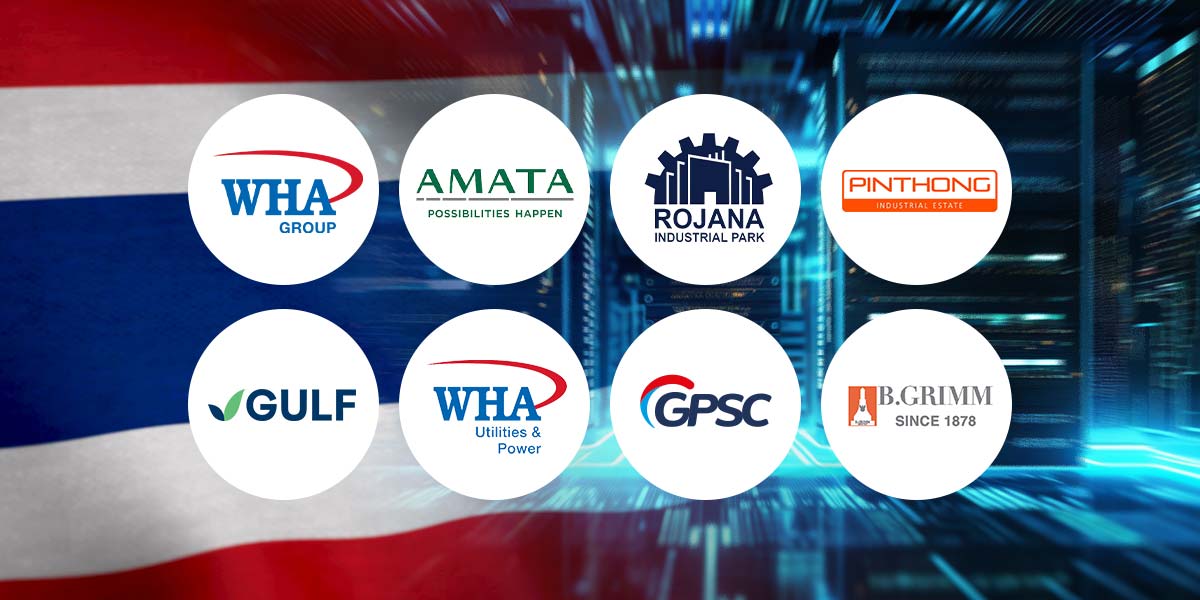Thailand’s data center industry is increasingly becoming a crucial segment within the nation’s IT infrastructure as global demand surges for cloud, AI, and digital services. In response, a growing number of major corporations have started to pour capital into data center projects across Thailand.
The trend is bringing early benefits to local stocks, particularly those in the industrial estate and power generation sectors, which handle substantial electricity and land requirements.
In a macro view, data centers are poised to become the world’s fourth-largest power consumer by 2035, largely due to the explosive growth of artificial intelligence. Data compiled by Goldman Sachs reveals that global data center power consumption is expected to rise 165% by 2030, compared to 2023 levels.
The U.S. is leading this trend, with data center construction spending tripling over the past three years as major tech firms invest in AI-enabled infrastructure. In 2024, data centers consumed around 415 terawatt-hours (TWh) of electricity, or about 1.5% of the world’s total power demand, according to the International Energy Agency (IEA). This sector has seen a 12% annual increase in electricity usage over the past five years. IEA projects that data centers will use about 945 TWh by 2030, accounting for nearly 3% of global electricity consumption.
Bloomberg further estimates that by 2035, this figure could surge to 1,600 TWh—about 4.4% of global demand—making data centers the fourth-largest consumers of electricity worldwide, following China, the U.S., and India. The U.S., China, and Europe are expected to be the top regional users, with Japan, South Korea, India, and Southeast Asia following.
Significant data center operations necessitate expansive real estate, significant water resources, and unconstrained access to reliable electricity. As artificial intelligence and services like ChatGPT drive continuous server activity, heat and power consumption surge accordingly. Thailand is well-positioned to meet these needs with abundant land, water resources, and a robust electrical grid—factors that have prompted many firms to anchor investments locally. Industry insiders predict additional entrants will soon follow as these advantages remain intact.
The data center expansion is fueling growth prospects for industrial estate developers and power producers. Among the listed companies benefiting directly are WHA Corporation (SET: WHA), Amata Corporation (SET: AMATA), Rojana Industrial Park (SET: ROJNA), and Pinthong Industrial Park (SET: PIN).
On the power supply front, companies such as Gulf Development (SET: GULF), WHA Utilities & Power (SET: WHAUP), Global Power Synergy (SET: GPSC), and B.Grimm Power (SET: BGRIM) stand to gain as electricity sales to data centers and industrial estates escalate, offering promising upside to their sector.
| Last Price 22 Sep 25 |
LSEG Consensus Target Price |
% Upside | |
| WHA | 3.68 | 4.44 | 20.58 |
| AMATA | 16.7 | 22.56 | 35.12 |
| ROJNA | 4.94 | 6.95 | 40.69 |
| PIN | 4.5 | 4.97 | 10.44 |
| GULF | 45.25 | 61.00 | 34.81 |
| WHAUP | 4.16 | 4.80 | 15.38 |
| GPSC | 40.75 | 41.45 | 1.72 |
| BGRIM | 13.5 | 15.89 | 17.70 |
Despite these favorable conditions, market participants remain mindful of intensifying regional competition. Countries such as Vietnam are also attracting attention as potential data center destinations due to their ample land. However, Vietnam faces challenges with power reliability compared to Thailand’s stable grid—a key difference currently encouraging foreign entries into the Thai market. Recent adjustment in Ft to electricity providers by the Vietnam Electricity (EVN) could also hamper investors interests.





